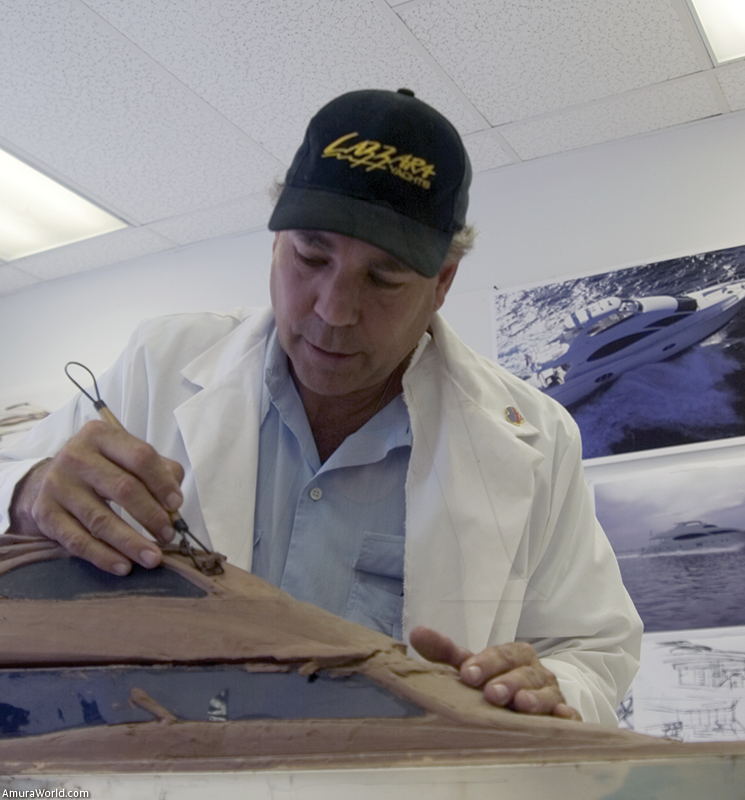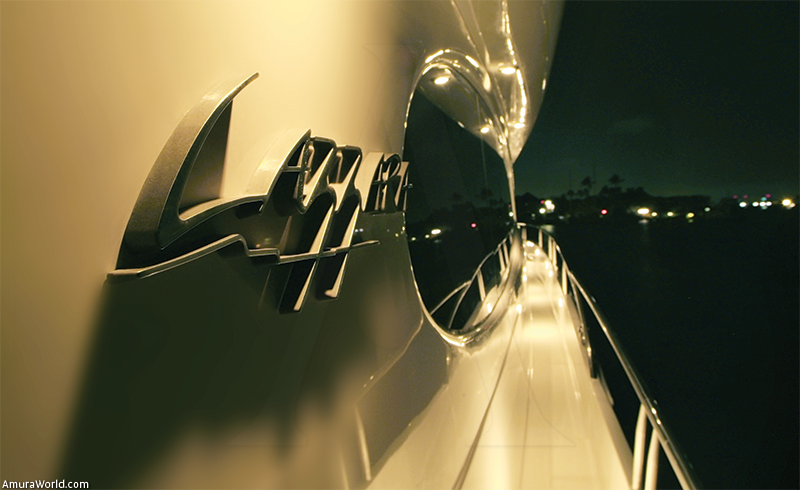Interview Dick Lazzara
More than 50 years' experience and three generations support the Lazzara company, located Tampa, Florida, in which nearly 300 people work toward a single purpose: “perfection”. It is not that more yachts are built, but their production is limited for one simple and important reason: exclusivity.
At the 2006 Miami Boat Show, where the company presented its most recent creations, and 84-foot open motor yacht, as well as 64 and 74-foot yachts, Dick Lazzara told Amura Yachts & Lifestyle exclusively: “We do not sell yachts, we adopt families”.
How old is Lazzara?
My family has been in yacht-building business for more than 50 years. My father built one of the first fiberglass yachts. In the USA, we were pioneers in the construction of fiberglass boats and we have had many companies in the same family, from sailboats to yachts, but this company in particular was incorporated in 1993.
How does Lazzara differ from its competitors?
It is a company where we make a number of very innovative and high quality products; therefore, from this point of view, we can personalize our yachts. We cannot make them completely to measure, but yes we do personalize them, leaving the final decision about almost the entire yacht to the client. That is why we do not build many yachts per year, but the ones we do build are of extremely high quality and subject to a very meticulous process with extreme care.
What you think about the Mexican market and its potential?
In 2005, we announced our distribution in Europe and Latin America. We have a dealer in Venezuela, which serves Mexico and the rest of Latin America, but we have little experience in the Mexican market because our brand has only been present there from 2005. Now we have more than four owners in Latin America. In other words, we are entering the market little by little and we have a lot of potential in Mexico since it is a large market with an enormous taste for sailing.
Where are trends in yachts heading?
Designs have become more global in recent years. In other words, before European designs were more contemporary and the interiors were not what North American clients preferred. In contrast, North American yachts had very spacious interiors, but their exterior designs lacked style. Now there is a mixture of the two, the Europeans provide more interior space and the Americans more exterior design. So today, with the competition in the market, every detail is highly important, such as exterior style. This design globalization will make competition extremely difficult for all boatyards.
How is the brand growing in terms of technology and how does it stay at the cutting edge of design?
With regard to the technology on board our yachts, we are considered as innovators, because we always pushing the boundaries of design and technology. We have a software called “I.S.I.S.”, which we invented, which, via satellite gives us the information we need, from the engines to the yacht’s air-conditioning system, its behavior at sea, so our experts can diagnose the behavior of our yachts under certain conditions and on specific routes in order to provide the owner with the recommendations for the best use and enjoyment of the vessel. Moreover, we have a 24-hour telephone number that covers the entire world in order to provide the assistance necessary at any time and with our satellite communication with your yacht, we can know exactly the situation of the yacht at the time you call us. If it is necessary that we send one of our technicians to the yacht, wherever it is, this can happen in less than 24 hours.
As a designer, where does your inspiration come from?
I don't know if I would call it inspiration, the fact that I grew up in this industry and have known people such as Phil Rhodey and Hill Tripp was certainly an influence, but my inspiration really comes from industrial design.
How do you stay at the cutting edge of construction?
We have obtained some patents in the molding process, but where we have concentrated the most is in the use of robotic processes, for example, 80% of our yacht finishing processes are automated.
Text: Enrique Rosas ± Photo: Lazzara.



